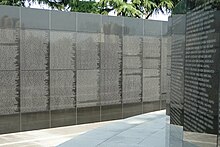Pusan Türk Şehitliği
Birleşmiş Milletler Anıt Mezarlığı olarak da bilinir.
- Tür: Anıt Mezar
- Bölge: Güney Kore, Pusan
25 Haziran 1950’de Kuzey Kore’nin Güney Kore’ye saldırmasıyla başlayan savaşa Birlemiş Milletler Kuvvetlerine bağlı olarak Türk Silahlı Kuvvetleri de dahil oldu. ‘’Kutup Yıldızı’’ adı verilen Türk tugayı savaşın birçok stratejik noktalarında üstün fedakarlıklar göstererek savaştı. Sunchon Boğazı’nı koruyarak BM ordusunu imha edilmekten kurtaran Türk tugayına başarısından dolayı ABD Kongresi tarafından ‘’Mümtaz Birlik Nişanı ve Beratı’’, Güney Kore Cumhurbaşkanlığı tarafından da Türk Silahlı Kuvvetleri’ne ‘’Birlik Nişanı’’ verildi.
Savaşın sonunda ‘’Kutup Yıldızı’’ tugayı 37 subay, 26 astsubay ve 658 er olmaz üzere 721 şehit verdi. 2147 asker yaralanarak gazi oldu. 175 askerden ise bir daha haber alınamadı. 403 asker Pusan Türk Şehitliği’nde yatmaktadır. Geriye kalan şehit askerlerin ise Kuzey Kore topraklarında bulunduğu belirtilmiştir. Kaybolan ve kuzeyde kalan şehit askerlerin yakınları cenazelerine sahip olmak için yıllardır yetkili mercilerle görüşmektedirler.
| United Nations Memorial Cemetery | |
|---|---|
재한유엔기념공원 | |
| Commission for the UNMCK (CUNMCK) | |
 UNMCK Wall of Remembrance | |
| Used for those deceased 1950–53 plus UNC deceased post-war | |
| Established | 18 January 1951 (as the United Nations Military Cemetery (UNMC)) |
| Location | 35°7′41″N 129°5′49″E / 35.12806°N 129.09694°E 93 UN Pyeonghwa-ro, Nam-gu, Busan, 608-812, Republic of Korea (Old address: 779 Daeyon 4-dong, Nam-gu, Busan) |
| Total burials | 2,300 |
| Burials by nation | |
United Nations Command (UNC):
| |
| Statistics source: * UN Memorial Cemetery (Official) * Korean War Memorials: UN Memorial Cemetery in Korea | |
| United Nations Memorial Cemetery | |
| Hangul | |
|---|---|
| Hanja | |
| Revised Romanization | Jaehan yuen ginyumgongwon |
| McCune–Reischauer | Chaehan yuen kinyŏmgongwŏn |
The United Nations Memorial Cemetery in Korea (UNMCK; Korean: 재한유엔기념공원; RR: Jaehahn yuen ginyeomgongwon),[10] located at Tanggok in the Nam District,[11] City of Busan,[nb 2] Republic of Korea, is a burial ground for United Nations Command (UNC) casualties of the Korean War.[nb 3] It contains 2,300 graves and is the only United Nations cemetery in the world. Laid out over 14 hectares (35 acres), the graves are set out in 22 sites designated by the nationalities of the buried servicemembers.[12]
- ^ Korean War casualties only. In 2012, the cremated remains of Archie Hearsay were buried with his brother, Joseph, who had died in Korea while both were serving. See: "Ashes of Canadian veteran buried beside brother in S. Korea". TBNewsWatch (Dougall Media). The Canadian Press. 25 April 2012. Archived from the original on 24 February 2014. Retrieved 19 February 2014.
- ^ Brent, Winston A. (2001). 2 Squadron in Korea: Flying Cheetahs 1950–1953. Nelspruit: Freeworld Publications. p. 134. ISBN 978-0958388092. OCLC 174758735.
- ^ "Turkish Fallen of Korean War Remembered". Diplomatic Observer. Ankara: Över Publishing. 2002. Archived from the original on 22 February 2014. Retrieved 16 February 2014.
- ^ Balkenende, Jan Peter (Prime Minister of the Netherlands) (29 April 2010). "Speech at the United Nations Memorial Cemetery in Busan". Documents and publications. Government of the Netherlands. Archived from the original on 1 March 2014. Retrieved 14 February 2014.
- ^ "UNMCK: Status of Interred at the UNMCK". Archived from the original on 10 August 2020. Retrieved 10 November 2013.
- ^ Dickon, Chris (2011). The Foreign Burial of American War Dead: A History. Jefferson, NC: McFarland & Co. pp. 138, 141. ISBN 978-0786446124. OCLC 659753667.
- ^ "Korea 2007". Det Norske Kongehus. 28 November 2007. Archived from the original on 19 February 2014. Retrieved 2 February 2014.
Among [the soldiers] is Norwegian Second Engineer Reidar George Tveit ... Crown Prince Haakon [also] laid a wreath at the new monument commemorating the Norwegian soldiers ...
- ^ Reportedly of North Koreans who refused to be repatriated following the war because they had criticized the regime. See: Baldwin, R F (2013) [2011]. Seven Years in Asia: A Wander's Tale. Booksmango. p. 278. ISBN 978-6162450969. OCLC 781689455.
- ^ Some unidentified Americans were left as token representatives to the unknowns. Pash, Melinda L. (2012). In the Shadow of the Greatest Generation: the Americans who fought the Korean War. New York and London: New York University. p. 134. ISBN 978-0814767696. OCLC 777627052.
- ^ "United Nations Memorial Cemetery, Korea". Archived from the original on 21 January 2021. Retrieved 12 January 2021.
- ^ 1901st Engr. Topo. Bn., ROK Army. "Pusan (Korea) 1959". American Geographical Society Library Digital Map Collection. Archived from the original on 10 November 2013. Retrieved 10 November 2013.
Boundary Line Plan United Nations Memorial Cemetery
{{cite web}}: CS1 maint: numeric names: authors list (link); also see: Korea 1:50,000 Pusan Sheet 7019 III (1947) Archived 22 February 2014 at the Wayback Machine and Pusan – 1947 – AMS Map Sheet L751 – 7109 III Archived 28 February 2014 at the Wayback Machine - ^ Clark, Donald N. (September 1996). "Part III: Smaller Foreign Cemeteries in the Provinces" (PDF). The Seoul Foreigners' Cemetery at Yanghwajin. Seoul, Korea: Seoul Union Church. p. 78. Archived from the original (PDF) on 22 February 2014. Retrieved 15 February 2014.
Cite error: There are <ref group=nb> tags on this page, but the references will not show without a {{reflist|group=nb}} template (see the help page).

